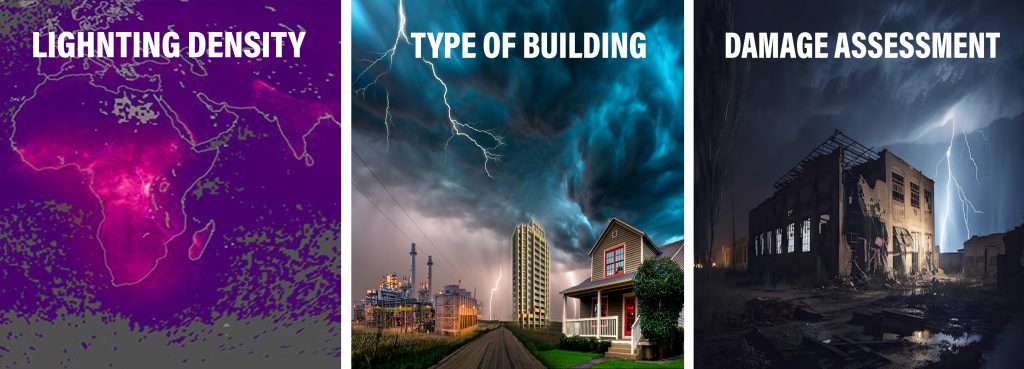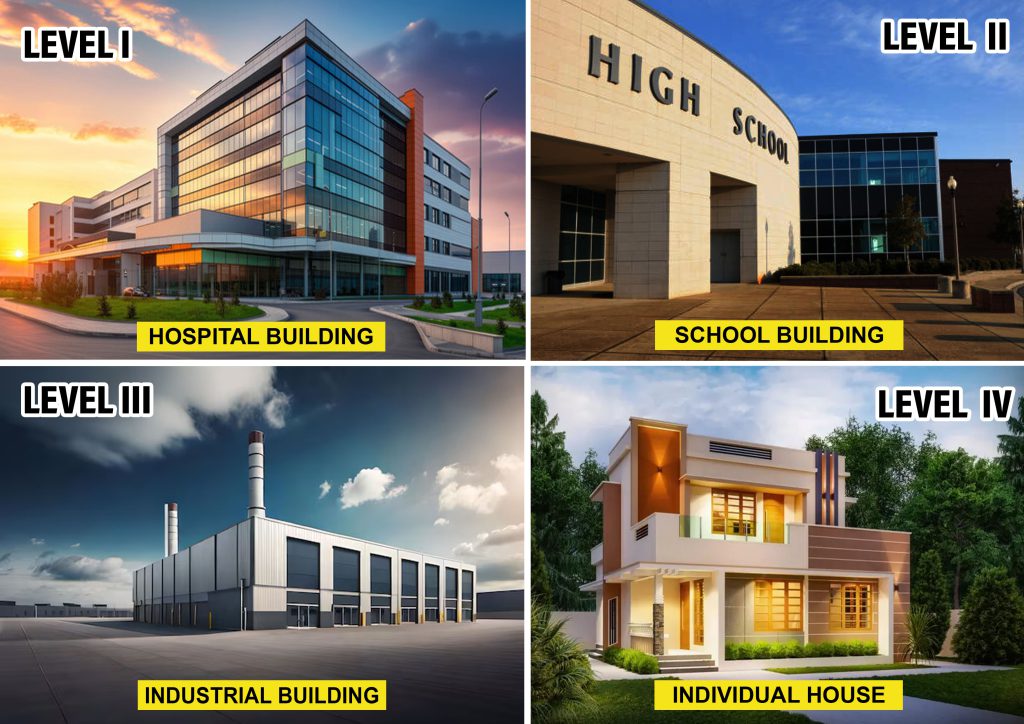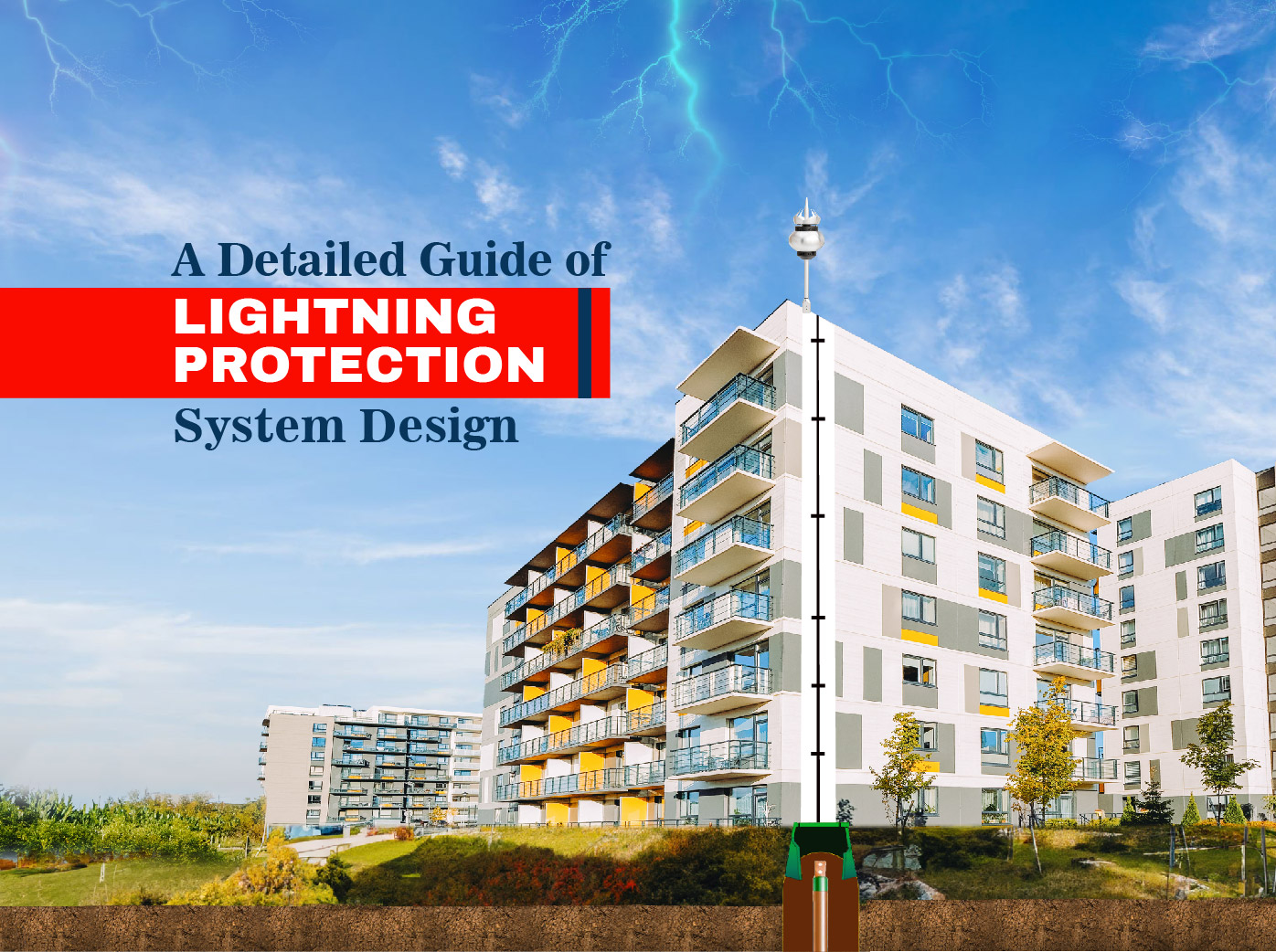Lightning is one of Mother Nature’s most powerful forces and it may come as a shock to learn that it causes billions of property damages and injuries to people each year. A good LPS is important for safety as it acts as an interceptor of lightning thus directing it safely to the ground. It requires not only the right materials, but also designing the system for each individual building. This guide will take you through the proper LPS setup, and how Ashlok expertise comes in and helps you stay safe from lightning strikes.
What is a Lightning Protection System (LPS):
A Lightning Protection System (LPS) protects your building by safely directing the energy
from a lightning strike into the ground. It helps prevent damage to the structure, equipment,
people and reduces the risk of fires caused by lightning.
3 Key Components of a Lightning Protection System:
1. Air Terminal for Lightning Protection
Consider this as the catcher of the system. Its purpose is to attract the lightning strike, so it hits a safe point instead of a weak point on the building. It may consist of rods, meshes, or high-end equipment.
2. Down Conductor System: Safe Lightning Pathway
If you catch some lightning, it has to have a safe route to travel. The down conductor system serves as a highway helping the current from air termination system to reach ground. They are cables or conductors that are specifically designed that run along side the structure.
3. Earth Termination System: Safely Dispersing Lightning into the Ground
Finally, this energy must be dumped safely into the ground, This is carried out by the earth termination system, which disperses the electrical current into the soil through various components such as earthing electrodes and backfill compounds.
These three components come together to provide protection for not only your building but also the people and equipment that occupy it. Without any of these the system wouldn’t be whole, and the risks posed by a lightning strike could still do considerable damage. Properly designed LPS protects everything else from every hit, no matter how hard.
Essential Procedures for Designing a Lightning Protection System:
1. Risk Assessment (Understanding the Lightning Risk)

Lightning Density: Determine how frequently lightning occurs in your region based on meteorological data. Areas with frequent lightning the protection must be stronger.
Building Type: Needs for protection depend on building type, i.e., on its size, construction as well as materials used. More height = greater coverage required
Injury Potential: If a lighting strike were to hit, would it hurt individuals or damage vital equipment? This is a guide to the level of protection required.
2. Determining Protection Levels
Determining the level of protection required is the first part of Lightning Protection System (LPS) design. IEC 62305 (International Electro-technical Commission) categorized these level into fours based on the size and type of building and its exposure to lightning (I to IV)

Level I: Critical buildings such as hospitals, data centers, and power plants fall under this classification, which are the highest category requiring protection.
Level II: For high-value structures, like commercial buildings and schools.
Level III: For houses and small commercial structures in low-hazard locations
Level IV: Minimum protection for all other buildings, such as small houses and warehouses.
3. Air Termination System Design
The Air Termination System it catches lightning before it hits the structure. Here’s how it works:
Mesh Method: Conductors (wires or rods) arranged over the roof like a safety net. For larger or critical buildings, the smaller the mesh the better the protection. Ashlok’s mesh systems are built with longevity and high performance to deliver high quality security for all buildings.
ESE Terminals: It capture lightning even more fast, a perfect choice for taller building or areas where lightning strikes occur regularly.
Rolling Sphere Method: This method is based on the concept of an imaginary sphere which ensures lightning is captured around anywhere the building.
4. Down Conductor System Design
The Down Conductor System is what transfers the lightning from the air termination system to the ground safely. Here’s how it works:
Additional Conductors: Buildings that are large or are within the path of the lightning benefit by using more conductors.
Optimization of the route: it is necessary to shorten and straight the conductor route, in order to keep the resistance of the way to use safe and damage-free.
Conductor Materials : It utilizes either copper or aluminium to prevent wasting power while effectively conducting the lightning power down to the ground.
5. Development of Earth Termination System
The Earth Termination System redirects the down conductor lightning current to the ground as safely as possible so that the building is not electrically damaged. Here’s how to optimize it:
Conductor Count: More conductors = More protection Better for larger building If Lightning Strikes More than once in Same Area.
Shortest Path: To minimize resistance and have safety, the conductors should be short.
Conductor Materials: most often copper and aluminum, since they lose less energy in the form of heat.
Trust Ashlok for Entire Lightning Protection Solutions
The success of a Lightning Protection System (LPS) lies in the quality and accuracy of its components. Of course, the experts are part of the design process and Ashlok Safe Earthing Electrode Limited gives you everything to turn the design into reality with reliability and performance.
Explore Ashlok’s full range of products now

At Ashlok, we combine advanced engineering with proven safety, offering complete solutions from Air Terminals, and Down Conductors to reliable Safe Earthing Electrodes that protect critical infrastructure. For projects requiring enhanced durability, our THOR-SLPR ESE Lightning Protection ensures long-lasting safety against even the toughest lightning strikes. From durable Chamber Covers to precision Lightning Impulse Counters, every product is designed to safeguard your property with maximum reliability, ensuring your infrastructure remains protected against the destructive power of lightning.
Complete Product Range: All your needs from Air Terminals to Surge Protection Devices (SPDs), Down Conductors to Chamber Covers, Ashlok has them all for you to protect your property and assets.
International Standards & Certifications: Our products comply with international standards (IEC62305), and are certified from CPRI, CE (Europe), etc., to provide our clients with quality and peace of mind.
Customised: Be it coastal, industrial or urban environment, Ashlok products can be customised as per the conditions providing protection for life.



